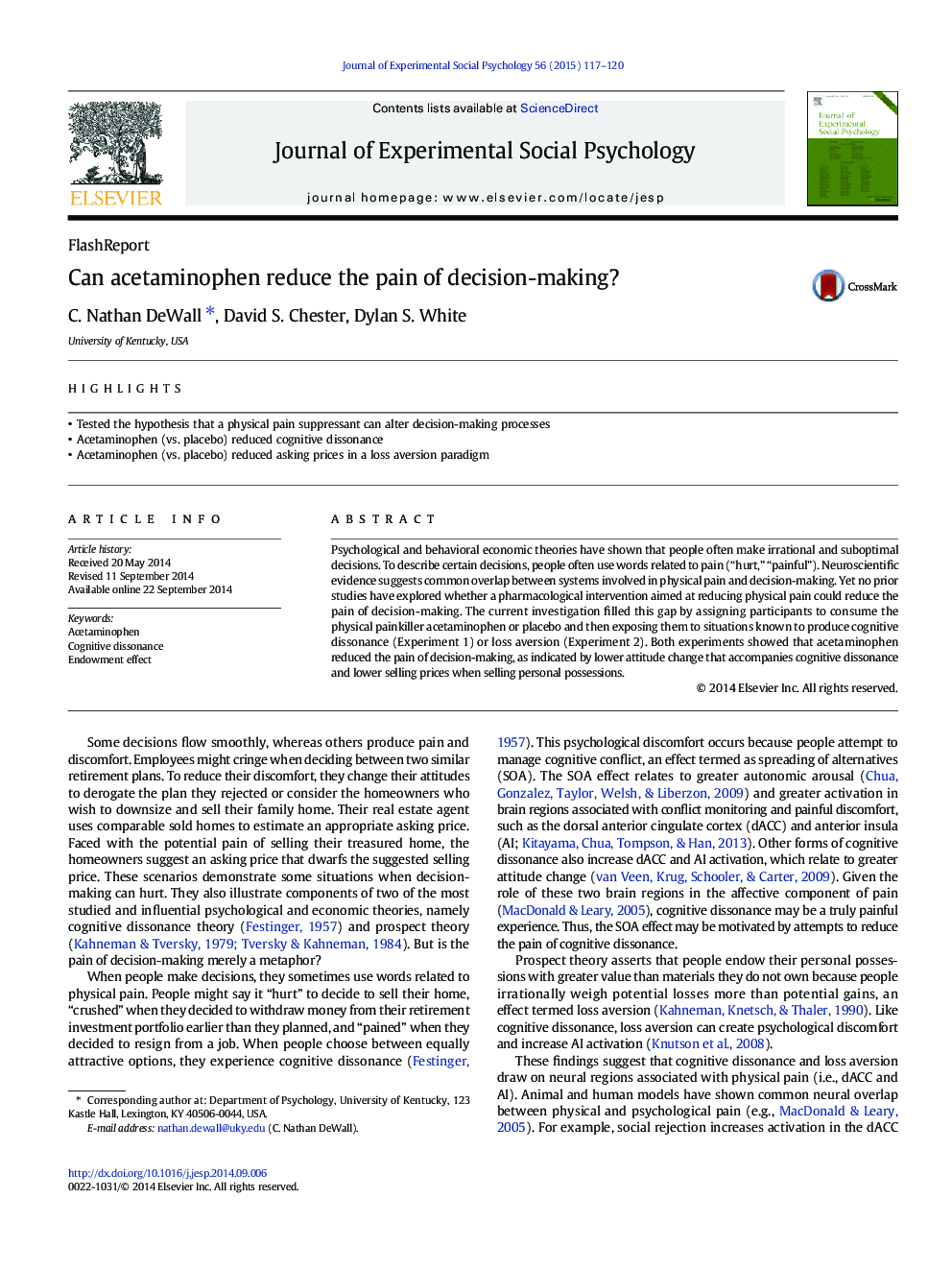| Article ID | Journal | Published Year | Pages | File Type |
|---|---|---|---|---|
| 947745 | Journal of Experimental Social Psychology | 2015 | 4 Pages |
•Tested the hypothesis that a physical pain suppressant can alter decision-making processes•Acetaminophen (vs. placebo) reduced cognitive dissonance•Acetaminophen (vs. placebo) reduced asking prices in a loss aversion paradigm
Psychological and behavioral economic theories have shown that people often make irrational and suboptimal decisions. To describe certain decisions, people often use words related to pain (“hurt,” “painful”). Neuroscientific evidence suggests common overlap between systems involved in physical pain and decision-making. Yet no prior studies have explored whether a pharmacological intervention aimed at reducing physical pain could reduce the pain of decision-making. The current investigation filled this gap by assigning participants to consume the physical painkiller acetaminophen or placebo and then exposing them to situations known to produce cognitive dissonance (Experiment 1) or loss aversion (Experiment 2). Both experiments showed that acetaminophen reduced the pain of decision-making, as indicated by lower attitude change that accompanies cognitive dissonance and lower selling prices when selling personal possessions.
